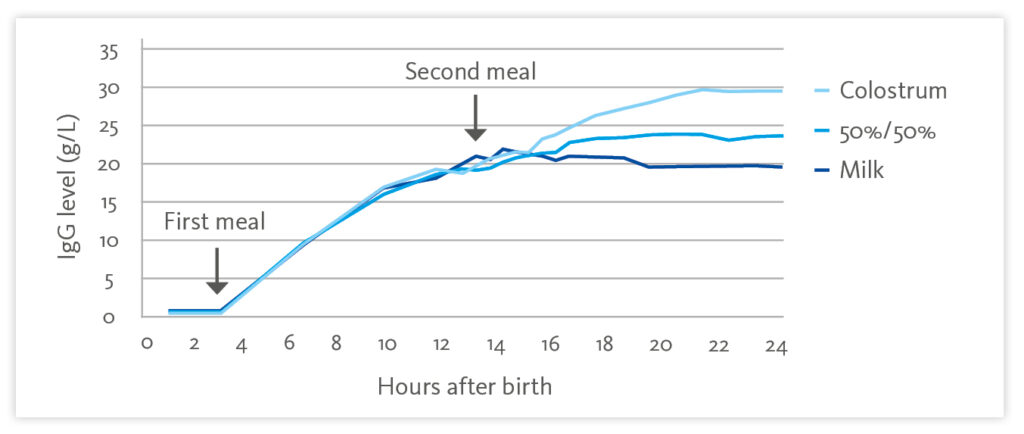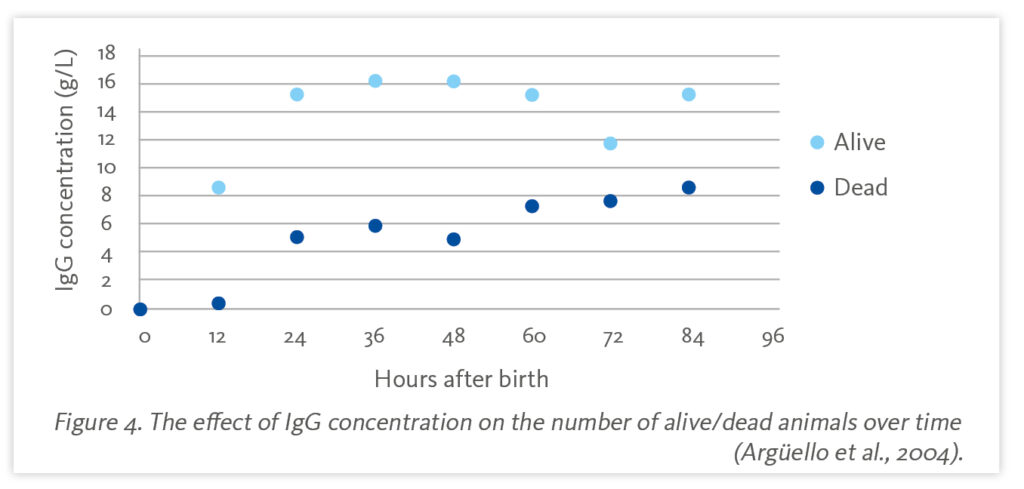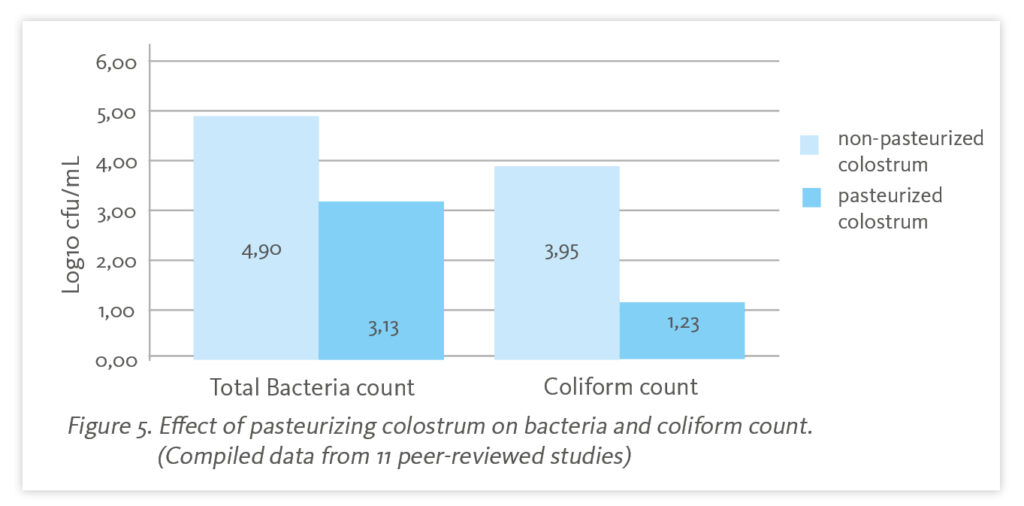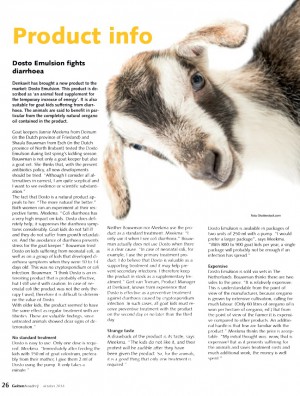Colostrum recommendations for kids and lambs
Why? Adequate passive transfer of IgGs and other developmental components is crucial for their survival and performance throughout life! How? 3 Q’s – Quick, Quality & Quantity!
Quick
Feeding colostrum as quickly as possible ensures the highest amount of IgG absorption. This is very important since the absorption capacity of macromolecules (such as IgG) declines rapidly after birth (see figure 1). After 24 hours, the gut is almost entirely closed for IgG. The first feeding of colostrum should be given within 2 hours after birth. As seen in figure 2, animals fed immediately after birth showed 33% higher IgG levels than ones that were
fed their first feeding at 6 and 12 hours old.


Also, the number of feedings is very important. Figure 3 shows the effect on IgG levels when another feeding of colostrum is fed versus a 50:50 mix or straight milk (or milk replacer) (research was conducted with calves). When fed colostrum, higher IgG levels after 24 hours were measured.

These figures show how important it is to feed colostrum as quickly as possible after birth. It highly influences the survival rate of the animal as can be seen in Figure 4. Animals that died during the first 96h of life had a low IgG level while animals that survived had a much higher circulating antibody level.

Quality
This encompasses both bacteria and pathogen levels along with IgG concentration. To improve the hygiene of the colostrum, a batch pasteurizer can be used. Figure 5 illustrates the difference between batch pasteurized colostrum (dark blue) in total bacteria and coliform counts versus non-pasteurized (light blue).

So, bacteria and pathogens levels are lower in correctly pasteurized colostrum. When IgG levels are measured and explained in BRIX values, 22 BRIX and higher is desired for quality. In case of less quality colostrum, alternatives like colostrum replacer should be given. Make sure that this colostrum replacer is of high quality.

Quantity
Depending on the method of feeding (bottle versus tubing), different feeding rates of colostrum are recommended, as can be seen in the tables below. In general, the advice is to give 15% of the body weight of
the kid or lamb in the volume of colostrum in the first 24 hours. Either you feed 3 times 5% by bottle or 1 time 8-10% by tube and 5% by bottle later on in the day.


Hygiene
As with all aspects of raising kids and lambs, cleanliness is extremely important. All pails and buckets used to collect or mix colostrum should be cleaned along with nipples, bottles and tubing equipment.





